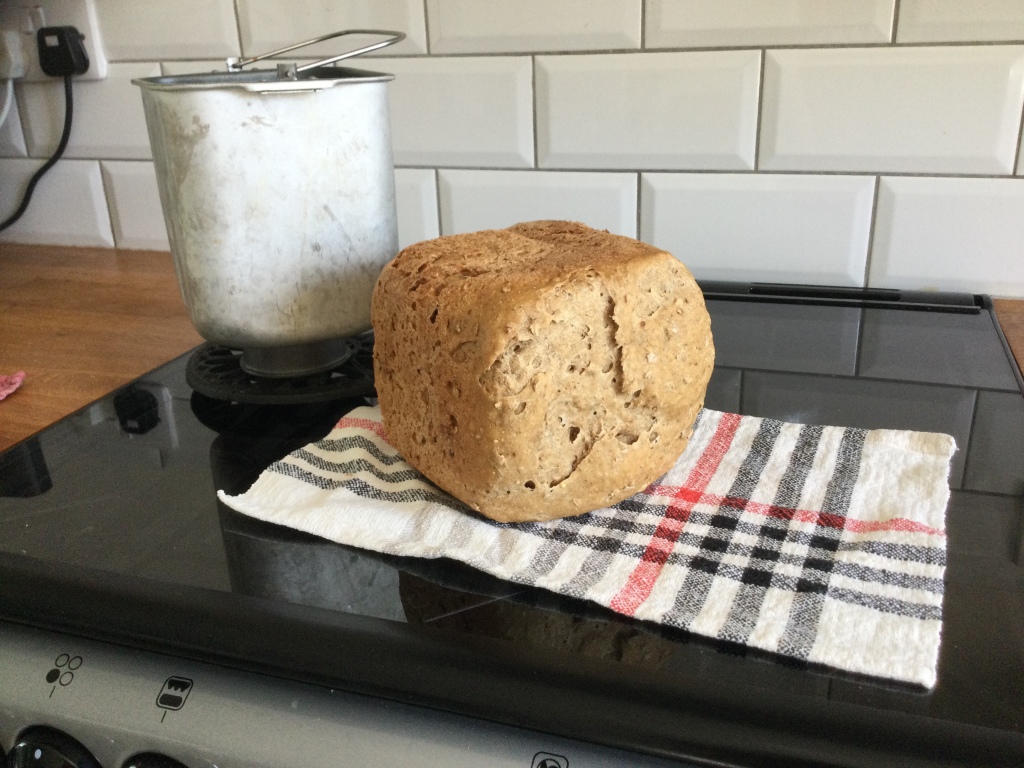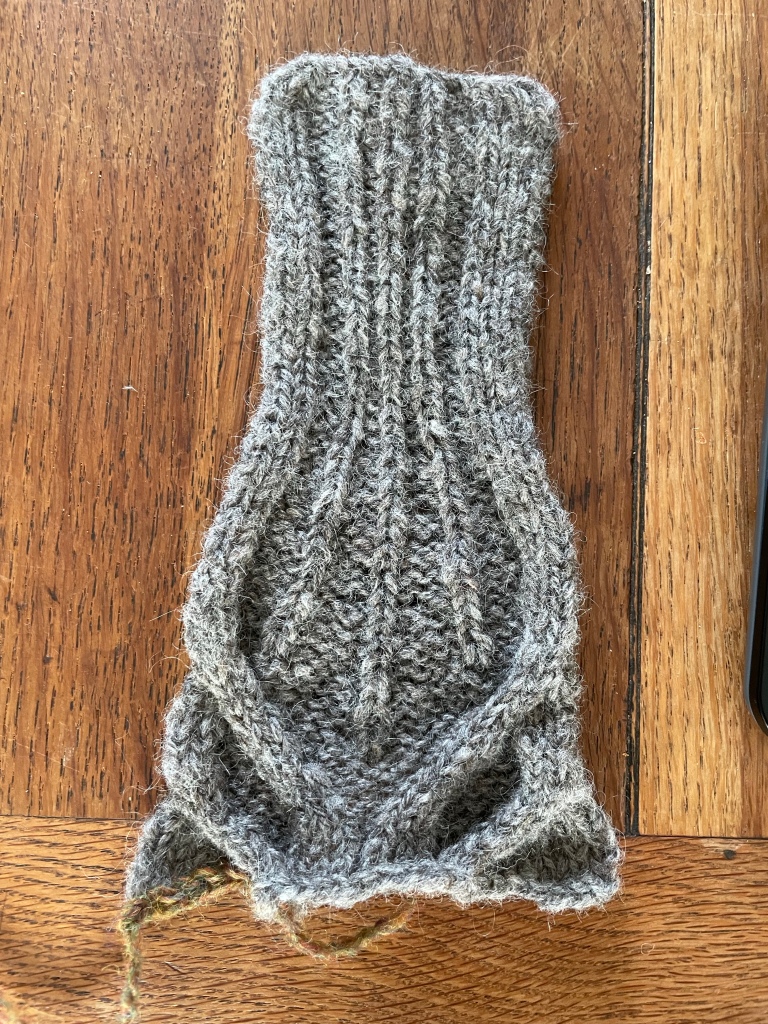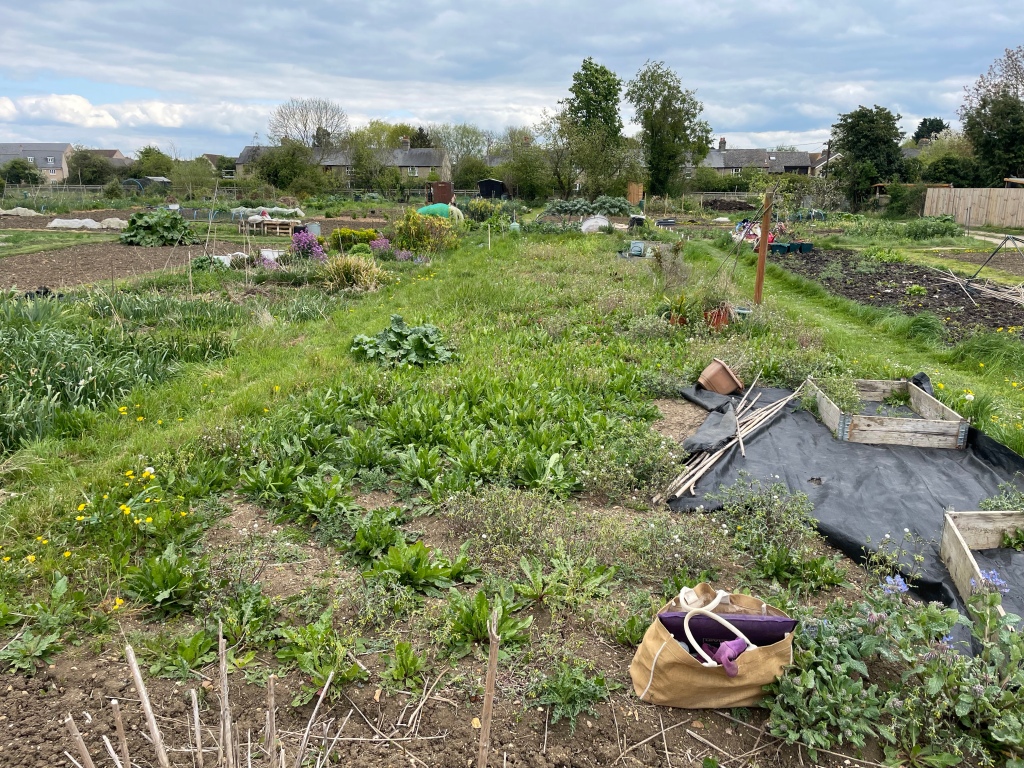I am still making bread using the method described in my All-machine white sourdough bread recipe, but these days I usually go for a mixture of rye and malted granary bread. I thought I would post an updated recipe for my own reference (and anyone else who is interested). I typically let the machine knead and bake the bread, but you can tip out the dough once it has risen, then shape, prove, and bake as you would any bread.
The time between steps will depend on how active your starter is when you begin, and the ambient temperature. This summer, I could start a batch in the morning, and have bread by the evening. In the winter, it can take two days to get through all the rising steps.
In addition to the usual baking equipment, you need:
- A large jar (c. 1 litre) or bowl that you can cover. I use a Kilner jar with the metal parts removed. This stops bugs etc getting in without the pressure building up.
- A bread machine that has separate ‘dough’ and ‘bake’ cycles. The nature of sourdough means that you can’t always predict how long the bread will need to rise between kneading and baking.

Ingredients
Sourdough starter from fridge
50g rye flour
400g malted grain flour
275ml water
1 tsp salt
2 tsp sugar (dark works well)
1 tbsp milk powder (optional, but helps it keep well)
1 tbsp oil (I usually use a neutral oil; dealer’s choice)
Step-by-Step
- Add the starter, the rye flour, and 75ml water to a large jar. Stir together well, cover loosely, and leave at room temperature until it becomes bubbly
- Add 100g flour, 100ml water to the jar. Stir in, and wait again
- Add another 100g flour and 100ml water to the jar, stir, and wait for it to bubble up. After this is complete, the mixture should fill about two-thirds of the jar. It’s capable of overflowing at this stage, so it’s wise to keep an eye on it!
- 525g of this mixture is for your bread; the rest can go back into a jar in the fridge. Feed it with equal weights flour and water if you think it needs it, but it won’t need much (say 10-15g of each).
- Add the active starter and the rest of the ingredients to your bread machine in the recommended order. For me, that’s oil, then starter, then dry ingredients on top. S
- Start the ‘dough’ cycle on your bread machine.
- Let the bread rise in the machine until it looks well-risen and ready to cook
- Start the ‘bake’ cycle on your machine.
- Voilà! Bread!















